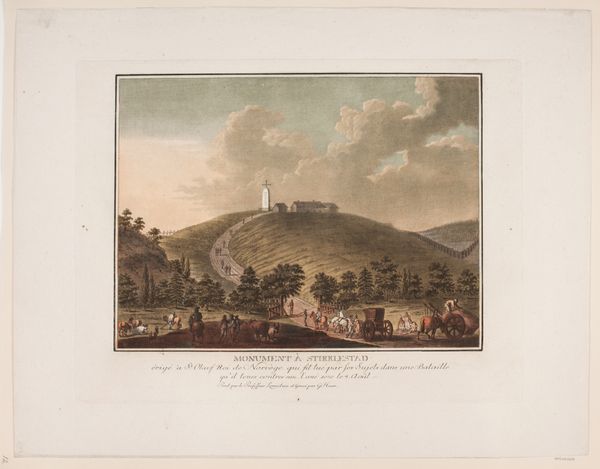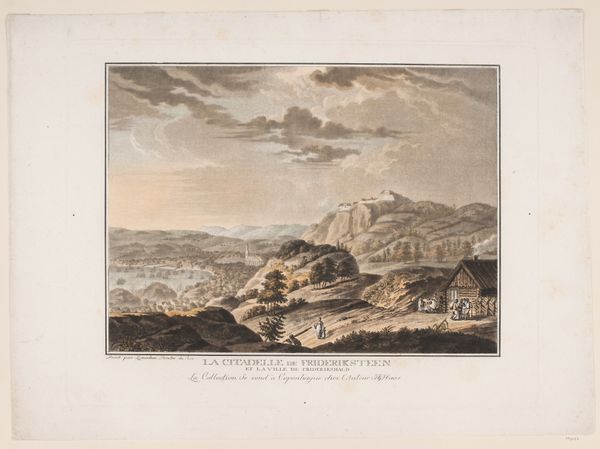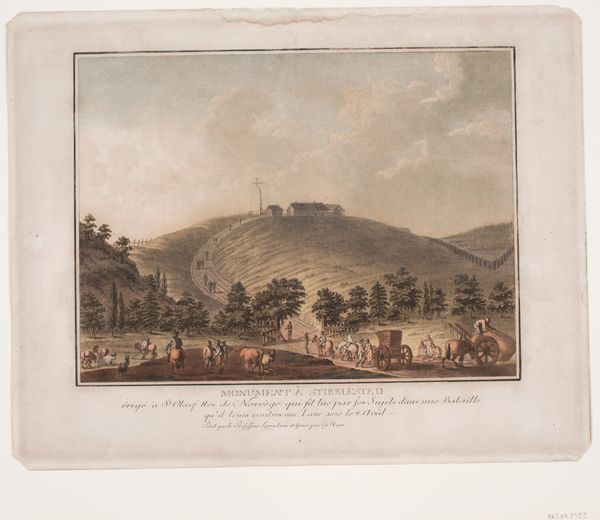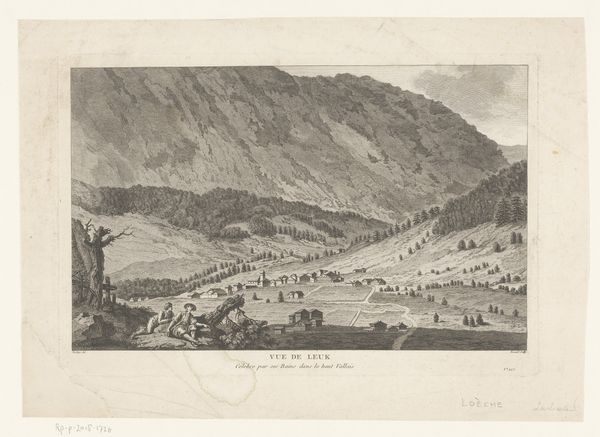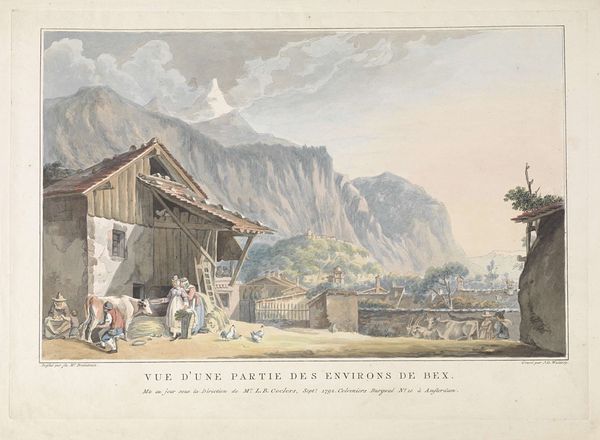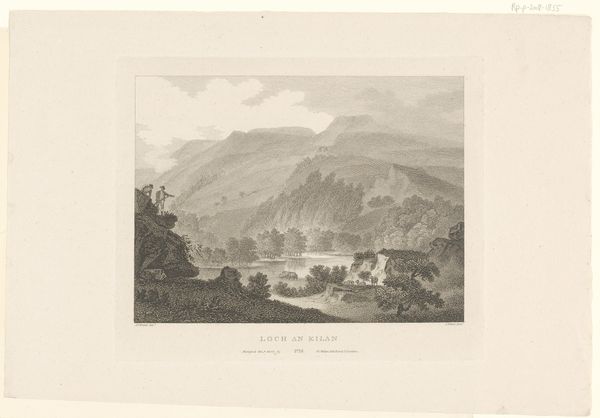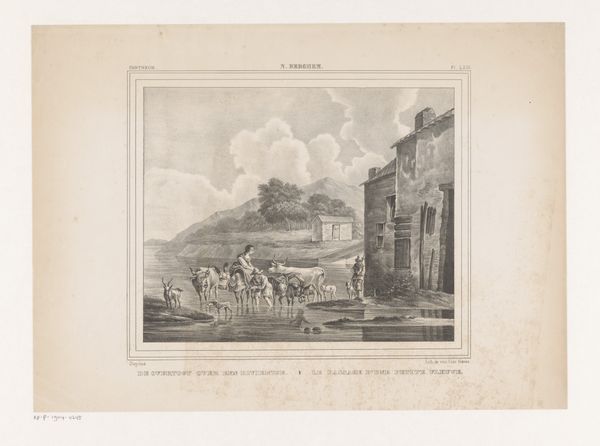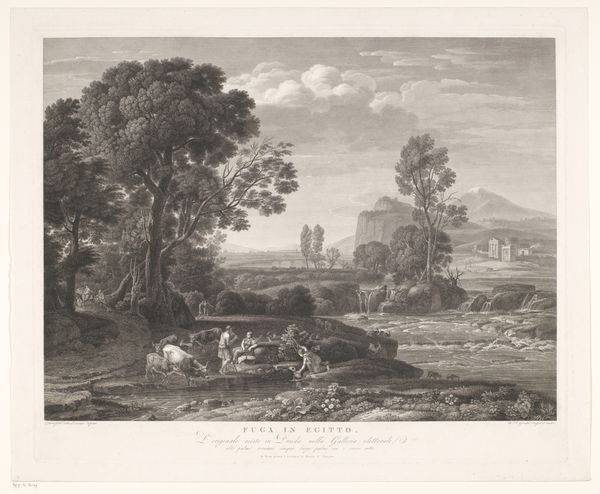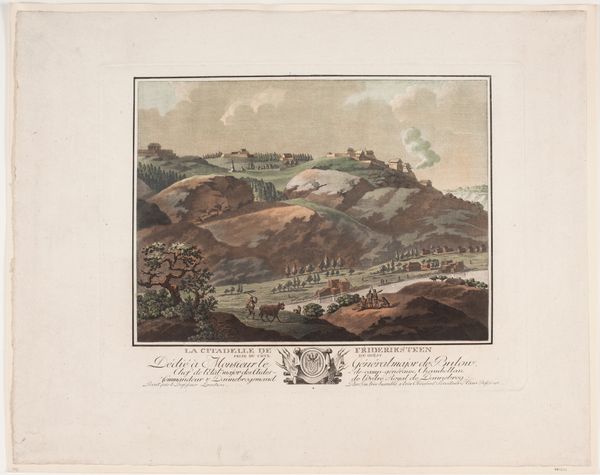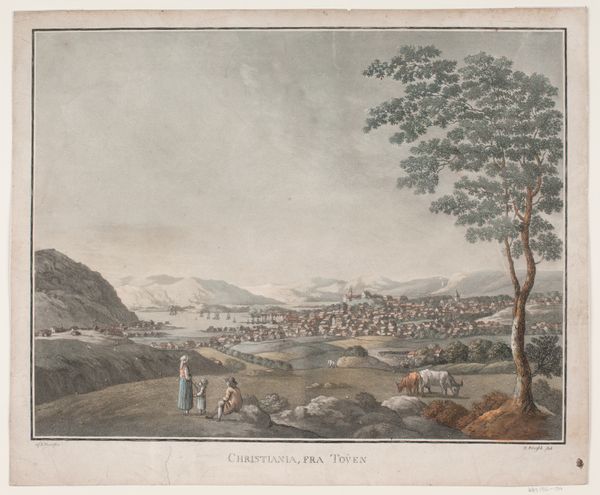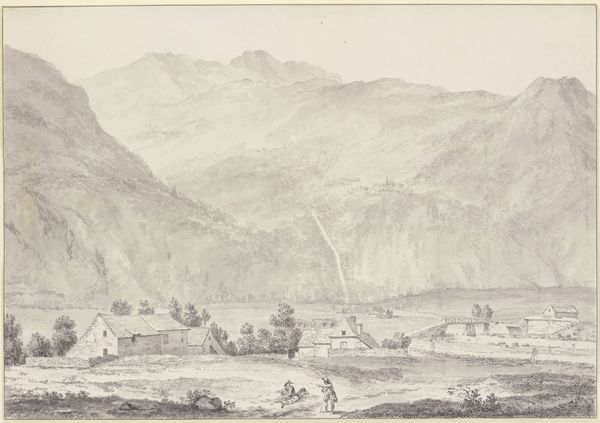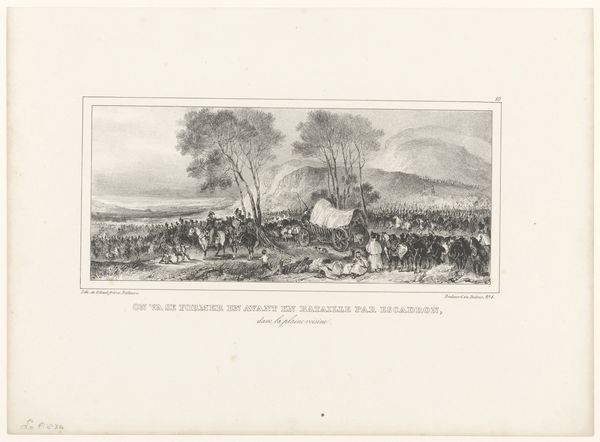
aquatint, print, watercolor
#
aquatint
# print
#
landscape
#
watercolor
#
romanticism
#
cityscape
#
watercolour illustration
#
watercolor
Dimensions: 371 mm (height) x 483 mm (width) (plademaal)
Curator: "Vue d'une Place dans la ville de Bergen," a cityscape rendered in watercolor and aquatint by Georg Haas between 1788 and 1792. It's part of the Statens Museum for Kunst collection. Editor: What strikes me most is the placidity of it. The light is so soft, and the mountains loom large but somehow feel benevolent, even picturesque. Curator: Right, this work captures a moment when "landscape" as a genre became tied up with notions of nation and civic pride. Here, Haas gives us a rather ordered Bergen. There's a market square, a stately building in the background. It’s a curated view of urbanity. Editor: Curated is a perfect word! There's a staged quality about it. Those little figures almost feel like actors on a stage set. Everything is so neatly arranged. It doesn’t breathe as a living city might. Do you think this reflects the political aspirations of the time? Curator: Absolutely. The rise of these kinds of cityscape views mirrored the burgeoning self-awareness of the urban elite. It suggests ideas of control and visibility. It shows power, doesn't it? Even down to the way labor seems neatly integrated into the scene. It is not some romantic escape into nature, but an affirmation of controlled urban life. Editor: Thinking about how it’s rendered, those delicate watercolor washes and aquatint lines lend this idealized view an air of fragility. It’s almost as if Haas himself knew that even this curated stability was fleeting, like watercolor itself, apt to run and fade. The composition hints at that, because despite all its detail, it's very muted overall. There is something fragile about the overall tonal value. Curator: Yes, perhaps an acknowledgement of the limitations inherent in any system, any attempt to fix and control the flow of human life. These kinds of romantic era landscapes often did hint at forces beyond human will. Editor: This image provides an early window into our contemporary struggles to define cityscapes. Who are they for? How do they represent our experiences? Curator: A window into those perennial struggles, still playing out today. Makes you consider who *isn't* depicted here, doesn't it? A blind spot to consider further, no doubt.
Comments
No comments
Be the first to comment and join the conversation on the ultimate creative platform.
